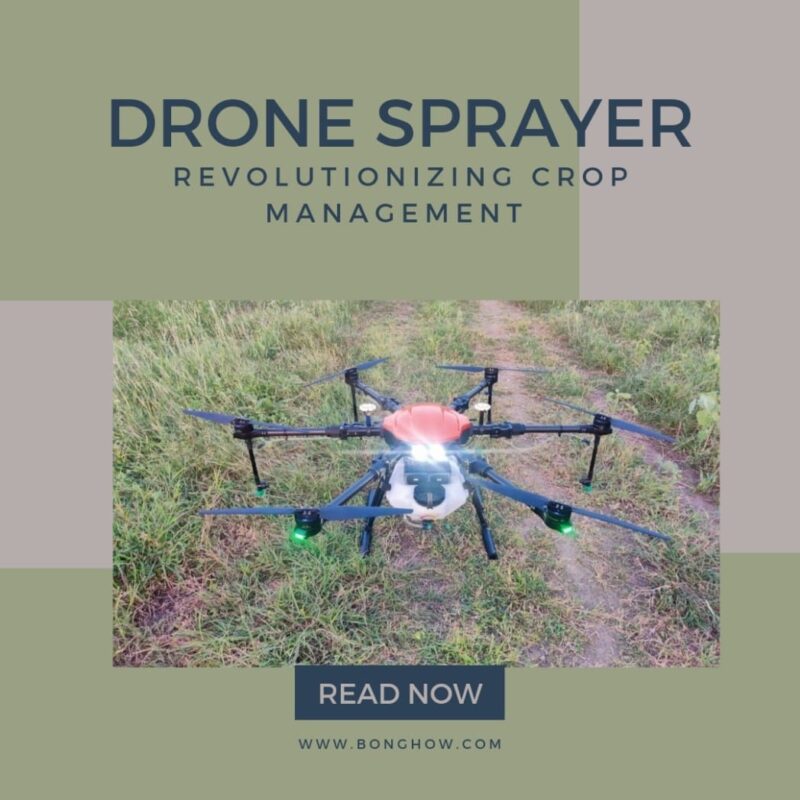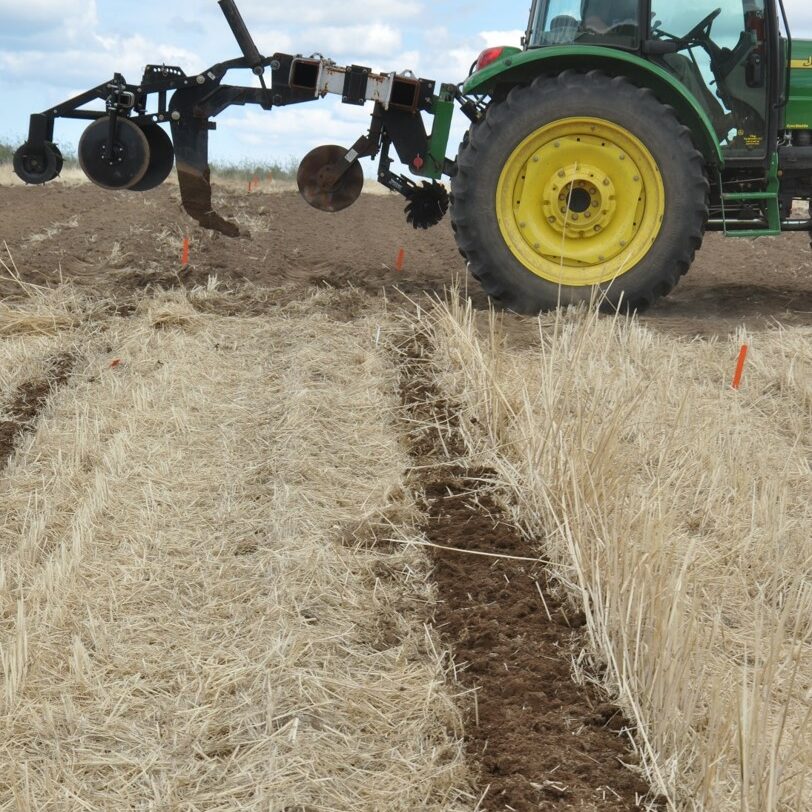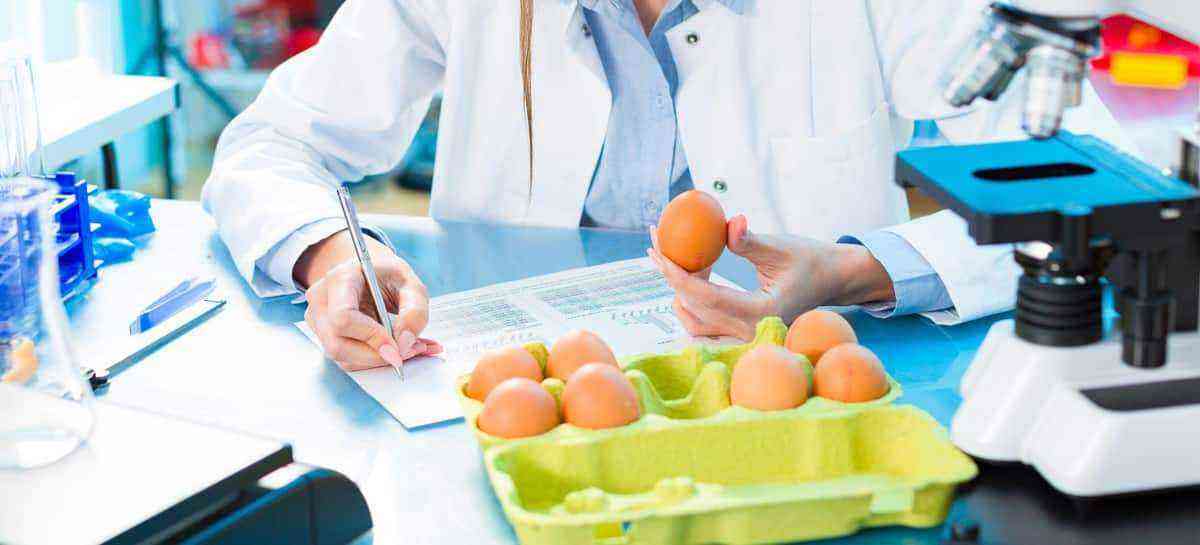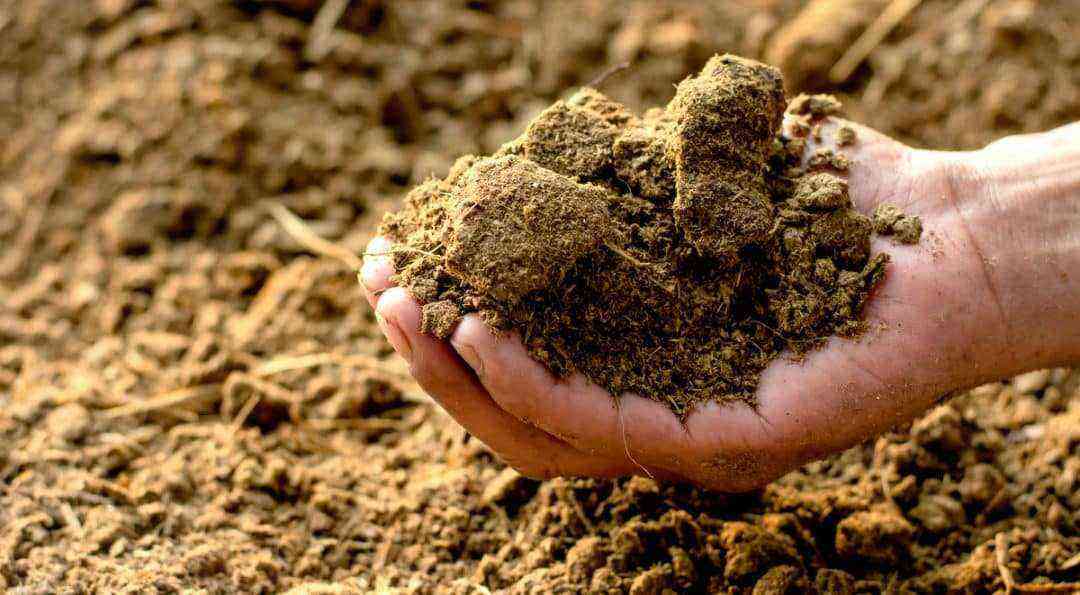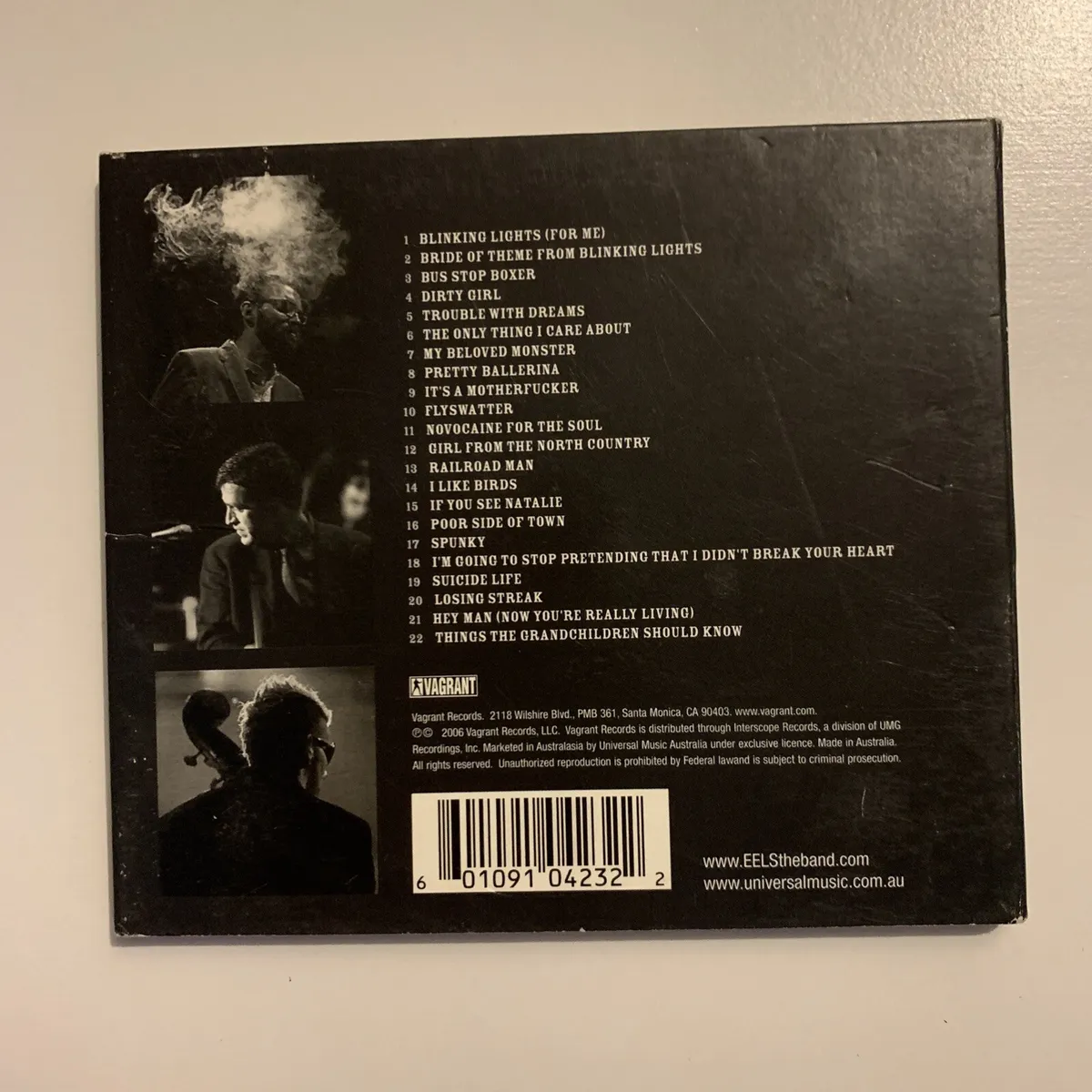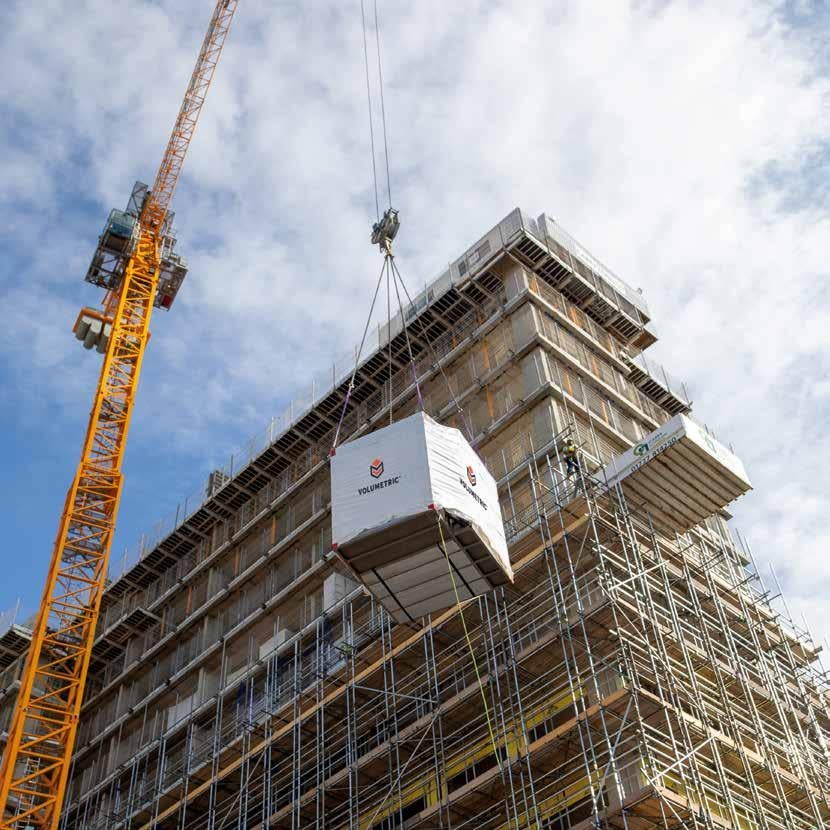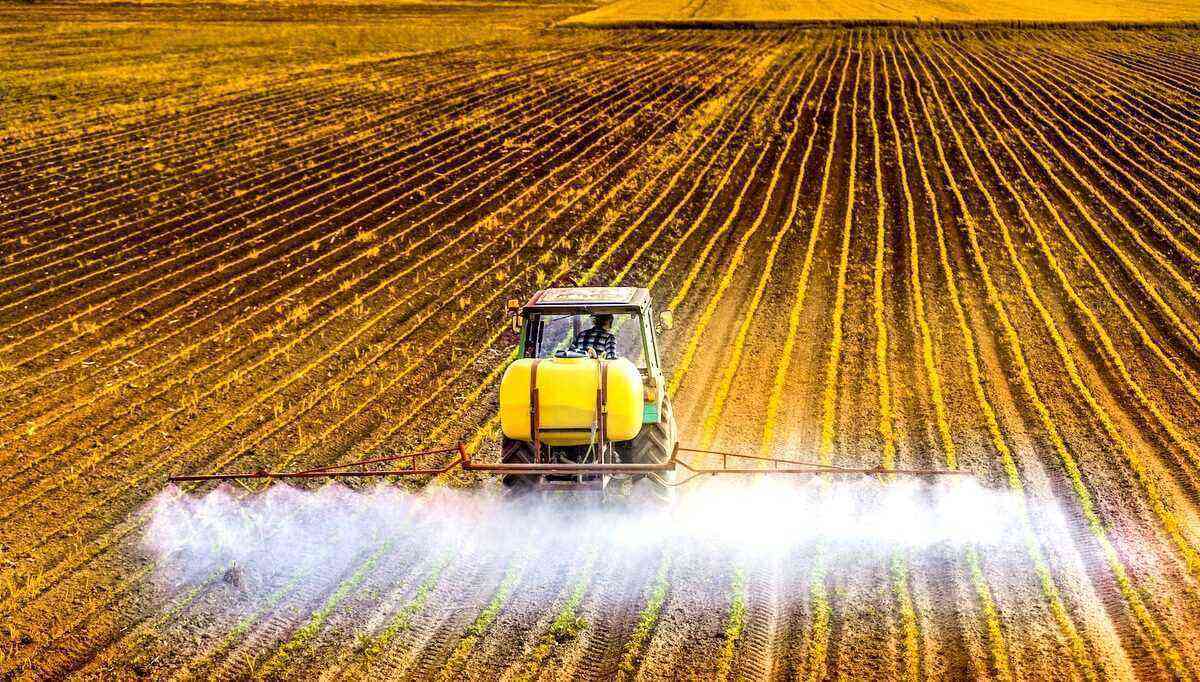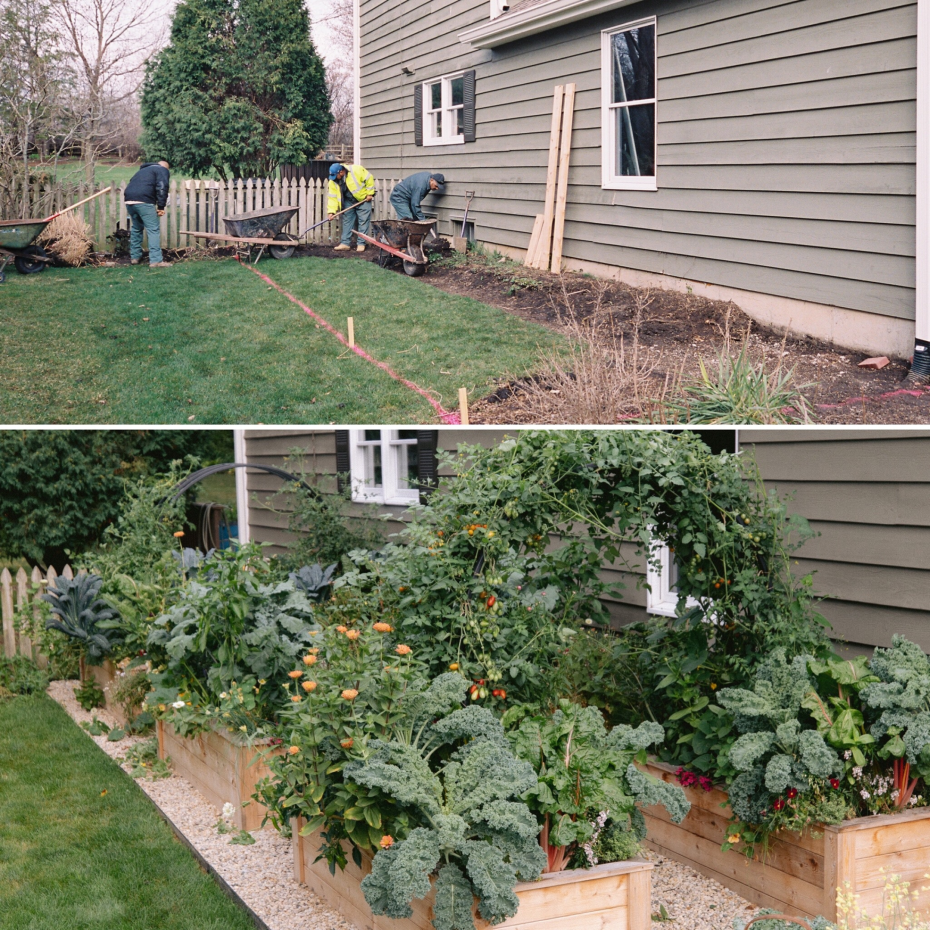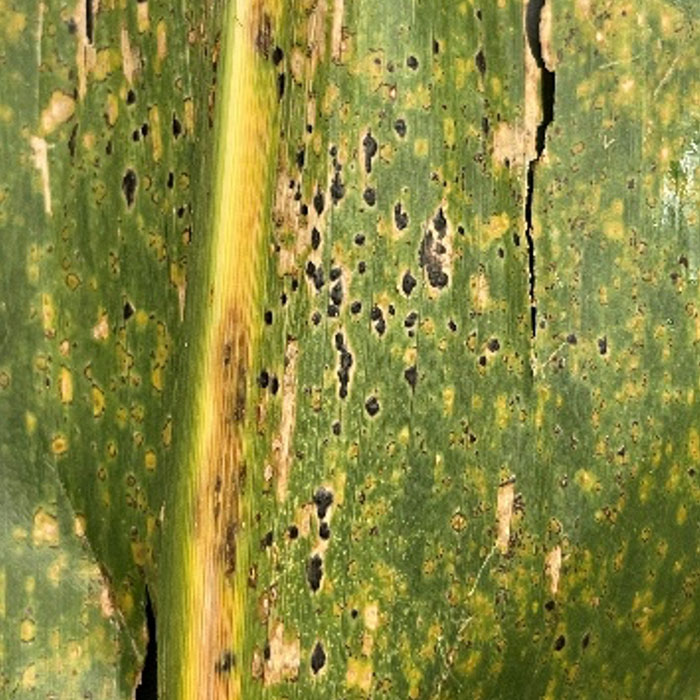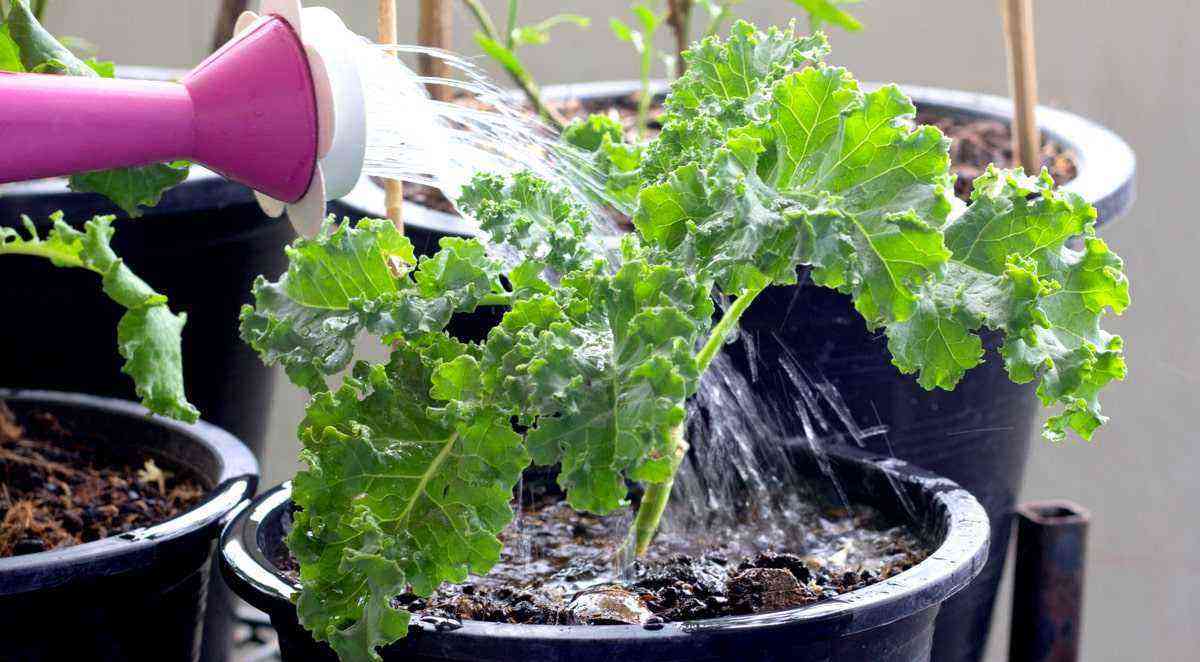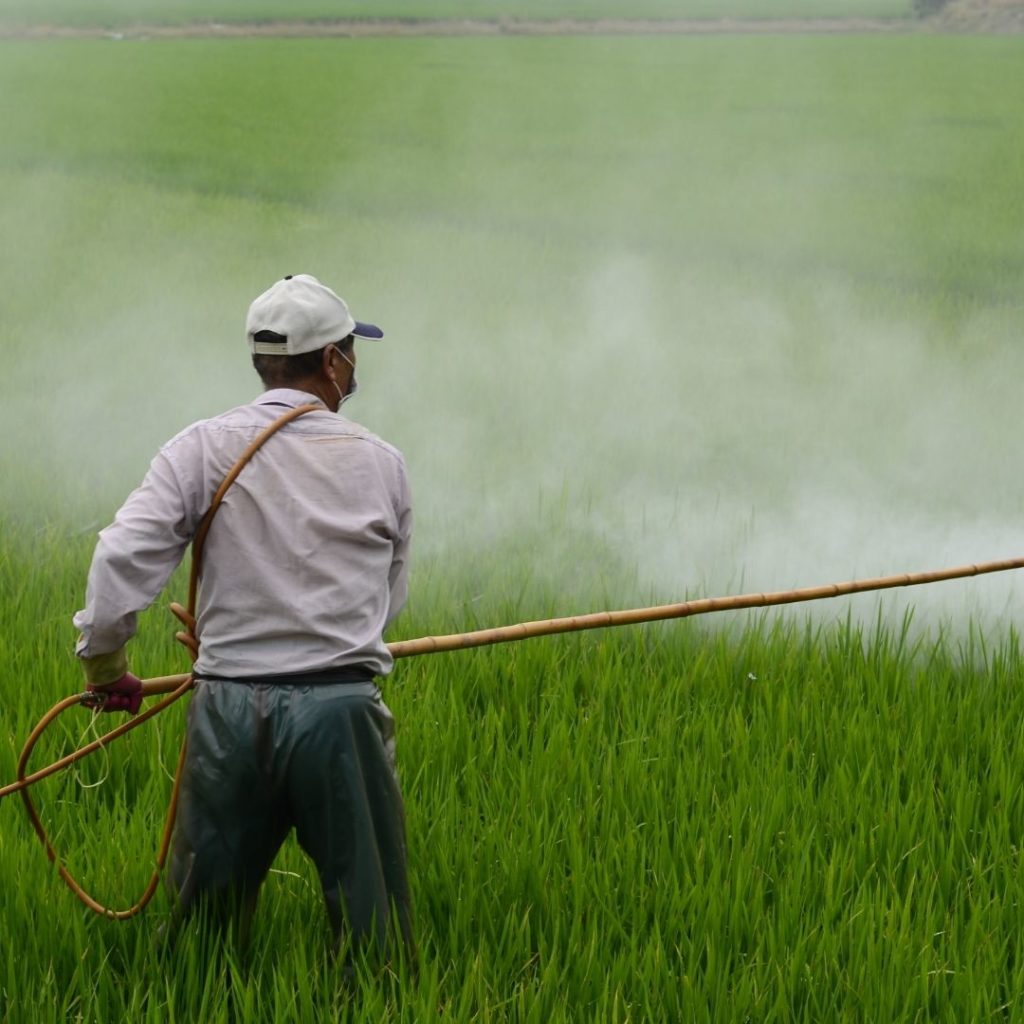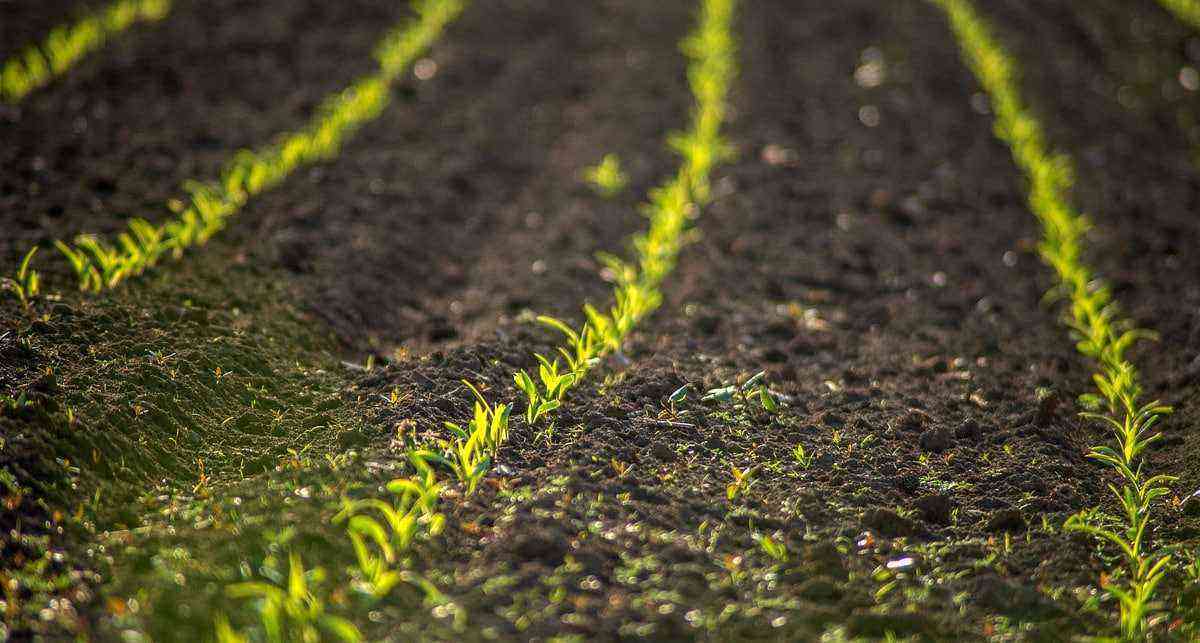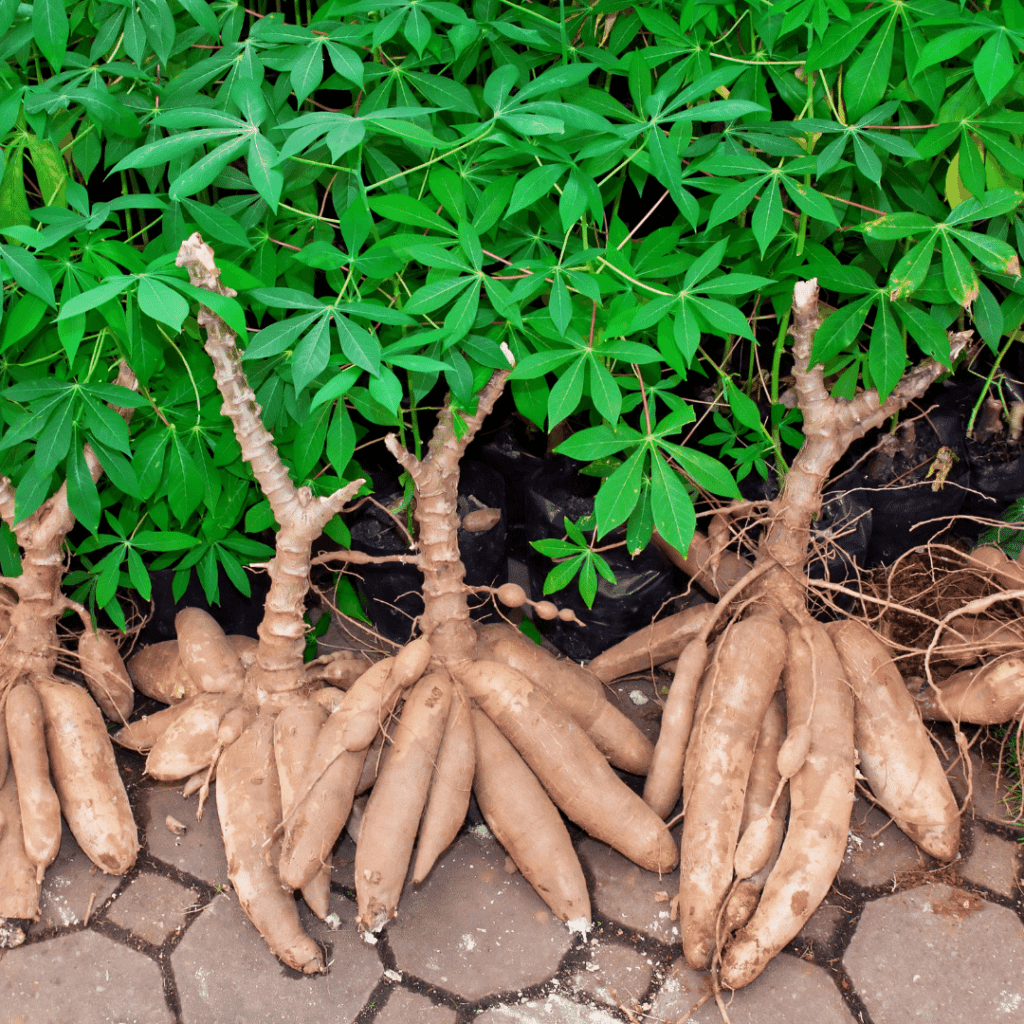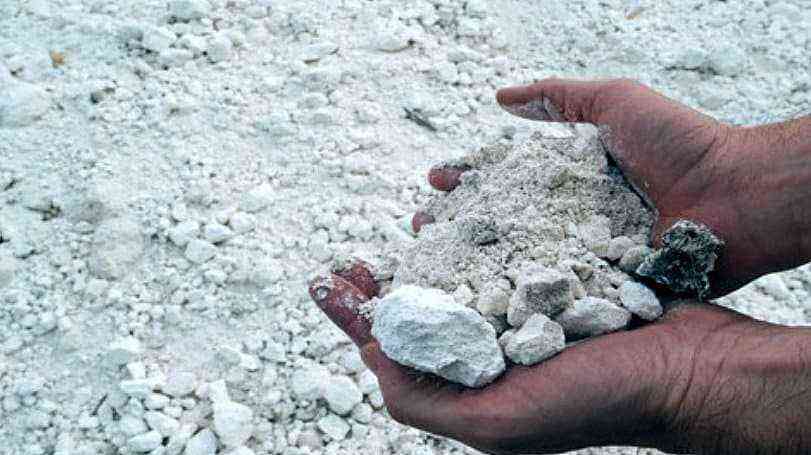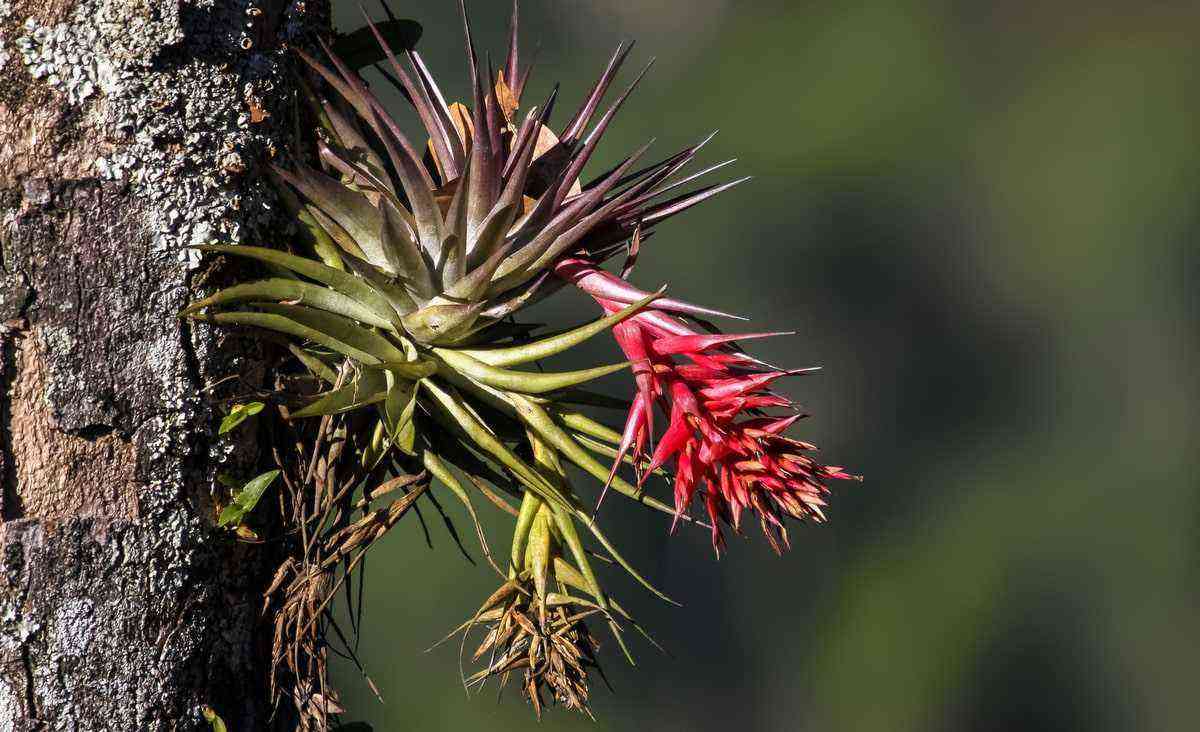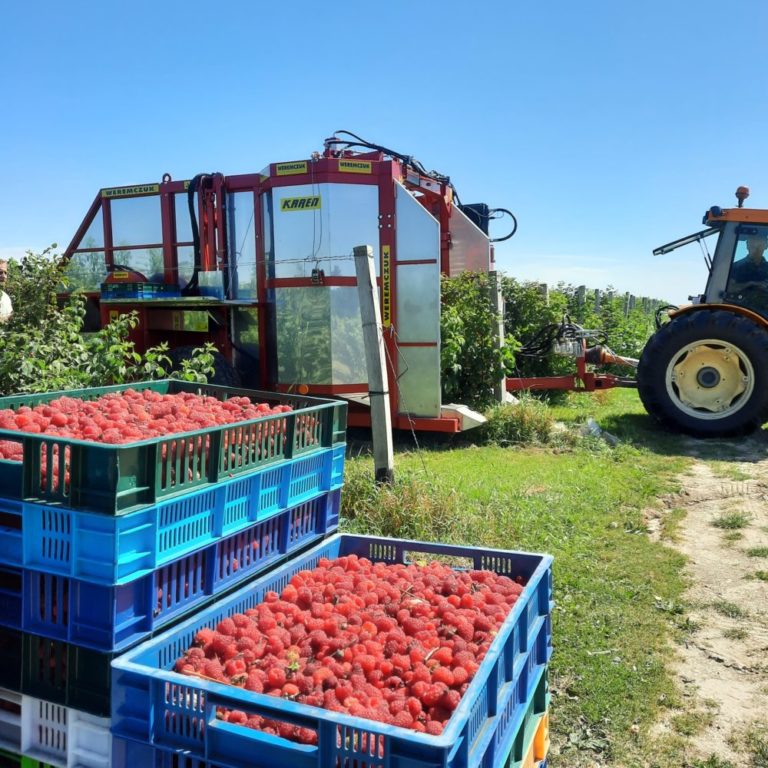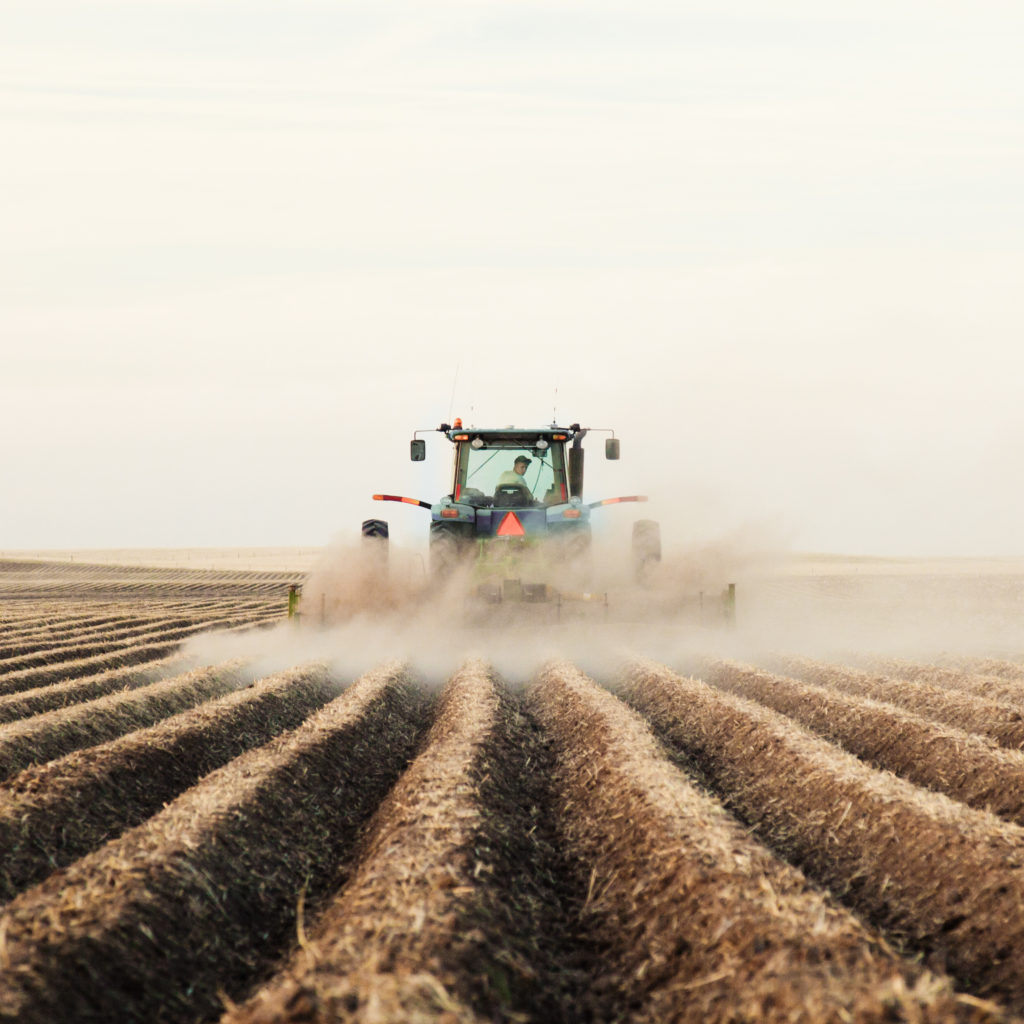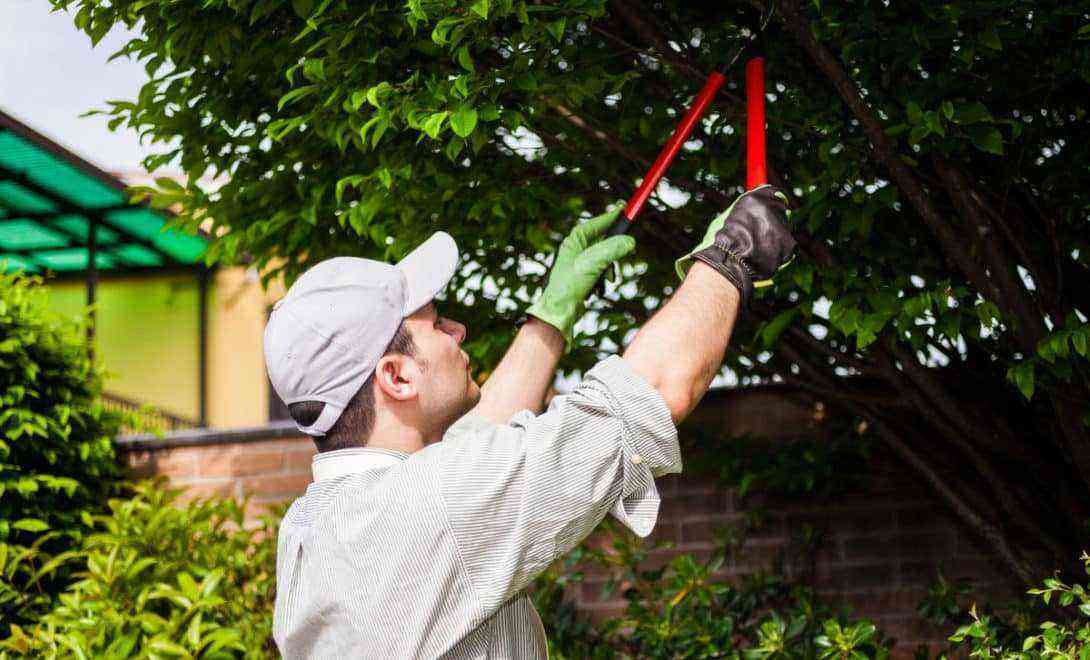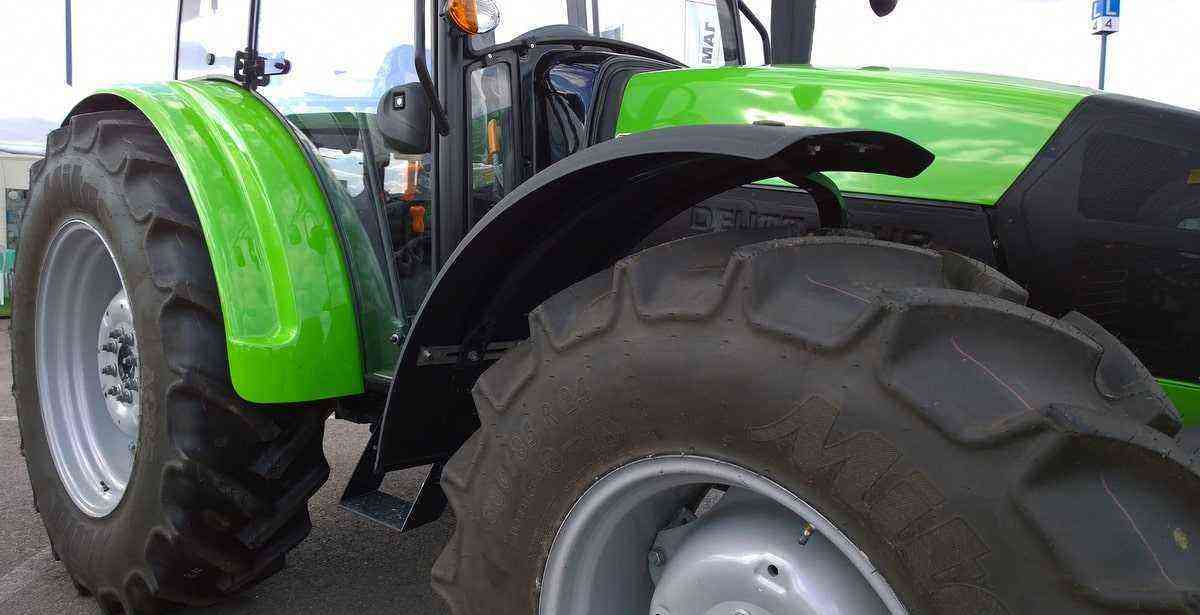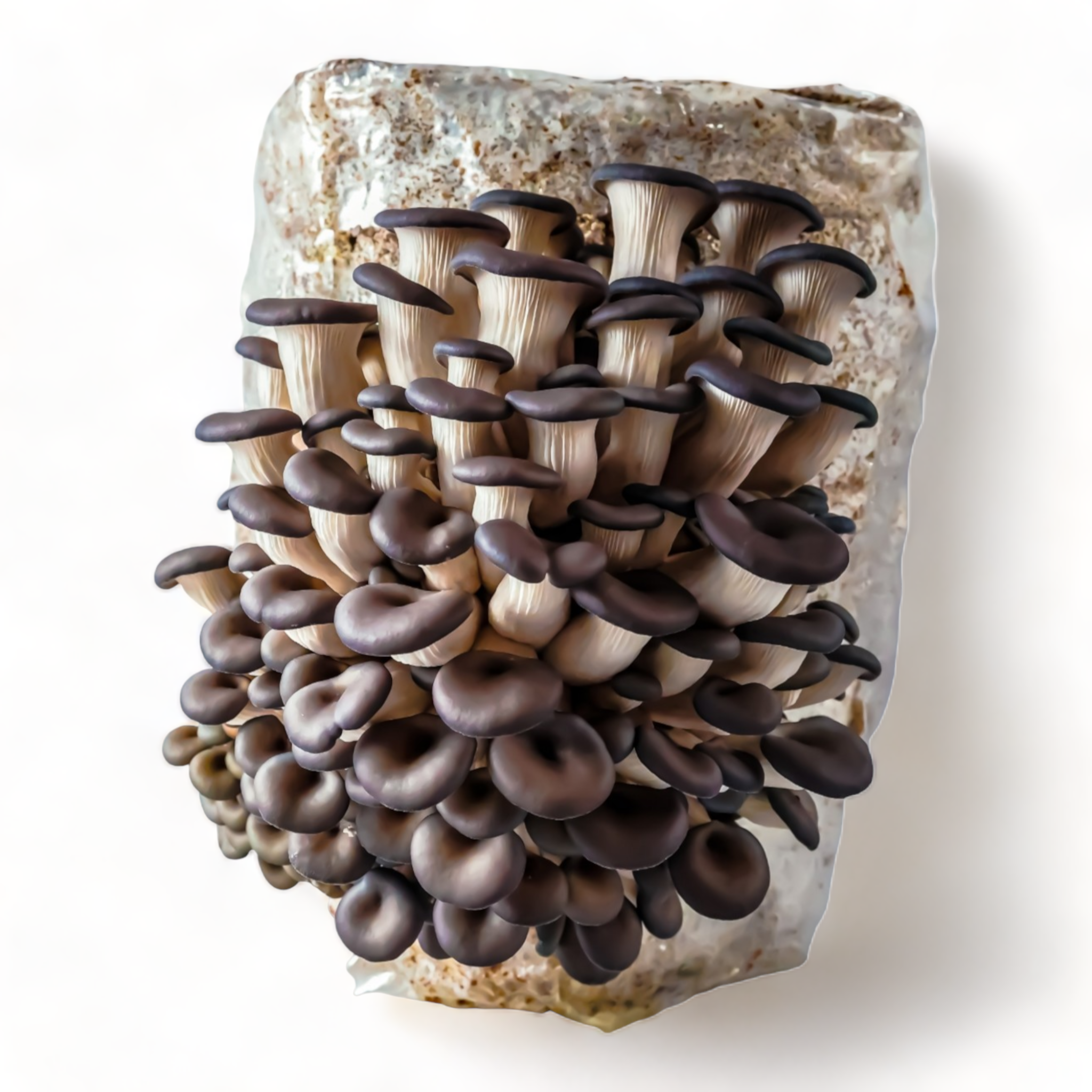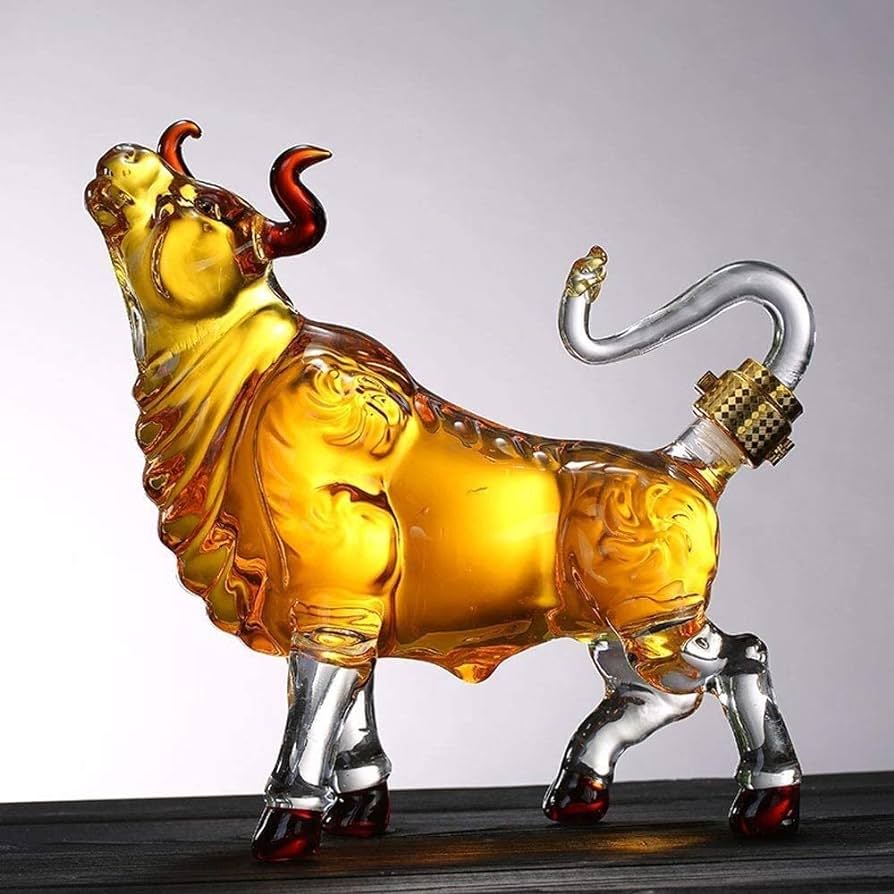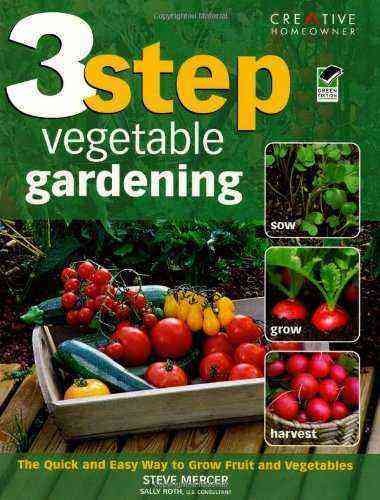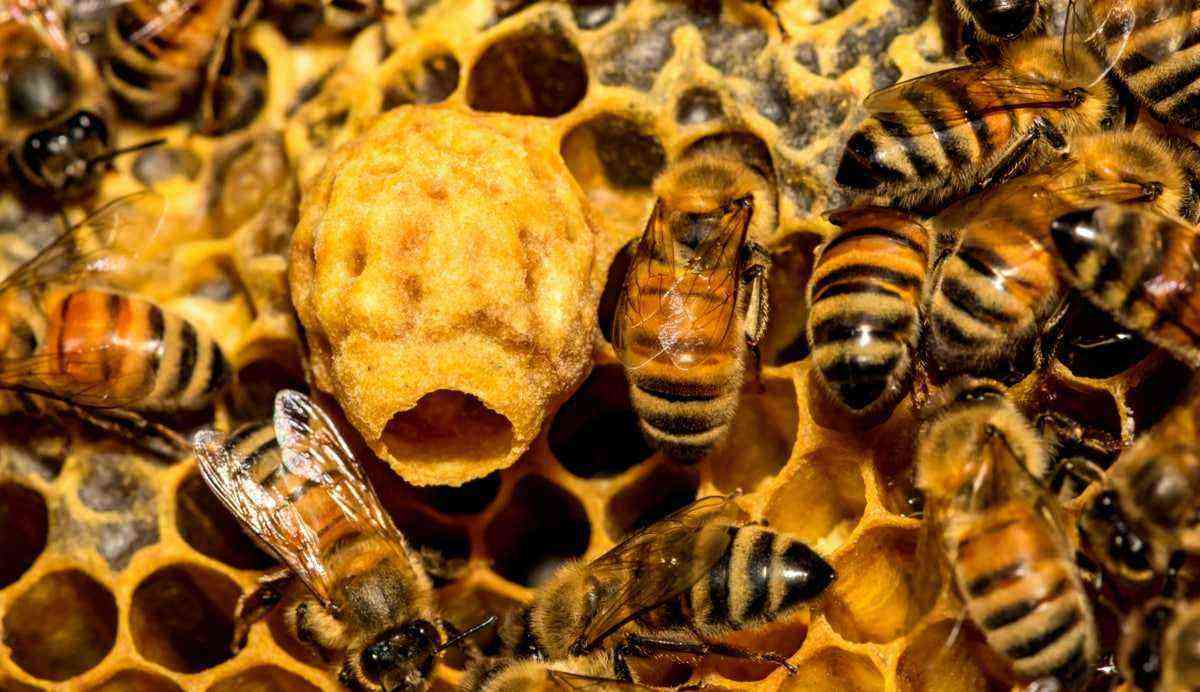Drones have gained prominence in the performance of pesticide spraying services in Brazil. In the 80s and 90s, for example, the tool was already used in Asia.
However, only after reducing costs and advances in embedded technologies, as well as precision agriculture, did the idea of using this equipment gain strength in other regions of the world.
In Brazil, this tool has been used mainly on smaller properties, or areas of difficult access, where it would be difficult to use land sprayers or agricultural planes.
And in localized applications, such as in the cultivation of sugarcane, to control weeds in reboleiras, in an operation known as “scavenging”.
However, spray drones have also been used in full-area applications for perennial crops such as coffee, or annual crops such as soybeans, corn and rice, similar to what is done by land sprayers or agricultural planes.
In the 2020/2021 crop, this occurred in some smaller properties, and especially in rainy periods, when ground sprayers could not operate due to soil moisture conditions.
Drone spraying
It has been observed that the drone market is taking a similar path to what is practiced in the spraying market in Argentina and the United States, or even in part of the agricultural aviation sector in Brazil.
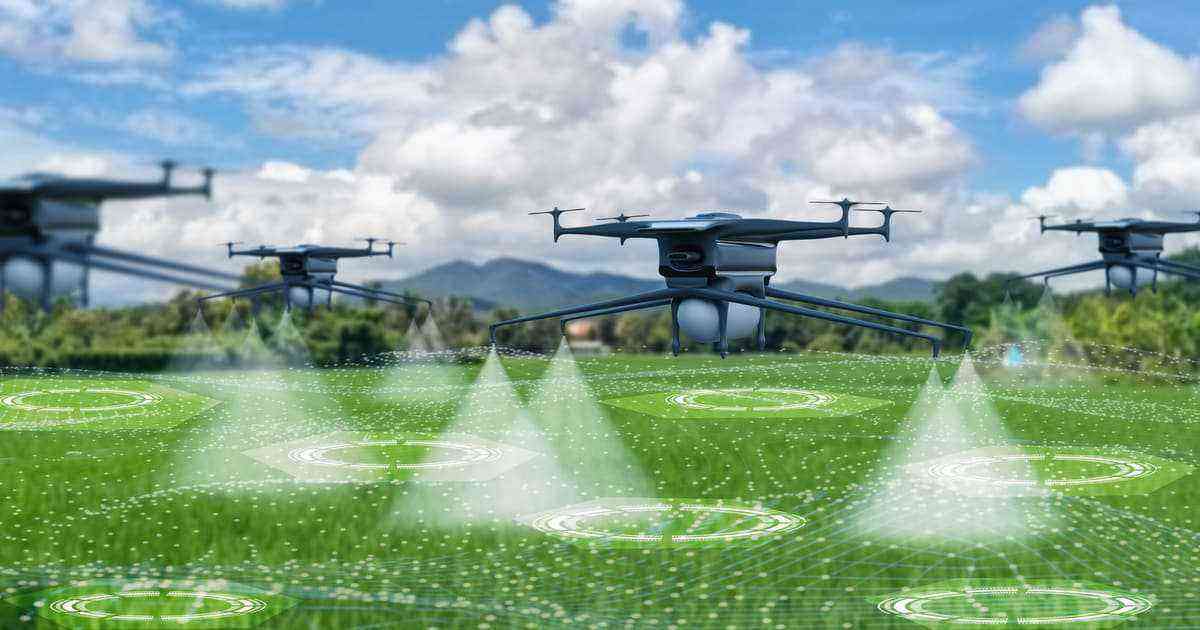
The drone for spraying is mainly used in small properties or crops that are difficult to access.
Service providers tend to be the main links in this market, providing the spraying service to farmers.
Among the factors for this to occur are the costs for acquiring the drone and batteries, as well as a transport vehicle, preparation of syrup, qualification of teams, among others.
Currently, the costs for acquiring a spray drone range from R$70.000,00 to R$200.000,00, according to information obtained from manufacturers.
Each battery can cost around R$12.000,00, and it is necessary to invest in several units, which can exceed the value of the drone itself.
According to information collected from service providers, the amount charged for spraying in the 2020/2021 crop ranged from R$100,00 to R$300,00 per hectare.
The relief, the application rate, the type of application (total area or localized applications), distance from the property, among others, interfere in the composition of costs.
In other words, everything indicates that for most farmers, hiring the spraying service will be more viable than purchasing equipment.
Care for an application with quality and safety
The first step in obtaining a quality application is to understand that the drone is an aerial application platform. Therefore, the characteristics of applications, adjustments and adjustments will be different from what is practiced in terrestrial applications.
Despite being an aerial application platform (aerial sprayer) the displacement speed is much lower than that of a helicopter or agricultural plane, being up to 25 km h-1.
The application height is at least 2,5 m above the target, while in land applications it is recommended that spraying be done between 0,5 and 0,75 m from the target.
As with agricultural aviation (airplanes and helicopters), drones can be classified as fixed-wing or rotary-wing.
However, in spraying by drones, only rotary-wing drones are used, while in agricultural aviation in Brazil, the use of fixed-wing aircraft is more common.
However, drones have a unique characteristic, which is the effect of the vortices generated by the rotors on the spray (Figure 1).
Unlike aerial applications with agricultural aircraft and conventional ground spraying.
Advantages of drones in spraying
This effect on spraying is much more pronounced for drones and has a great impact on spraying, interfering with aspects such as uniformity and width of the deposition strip, penetration of droplets into the plant canopy, drift potential, among others.
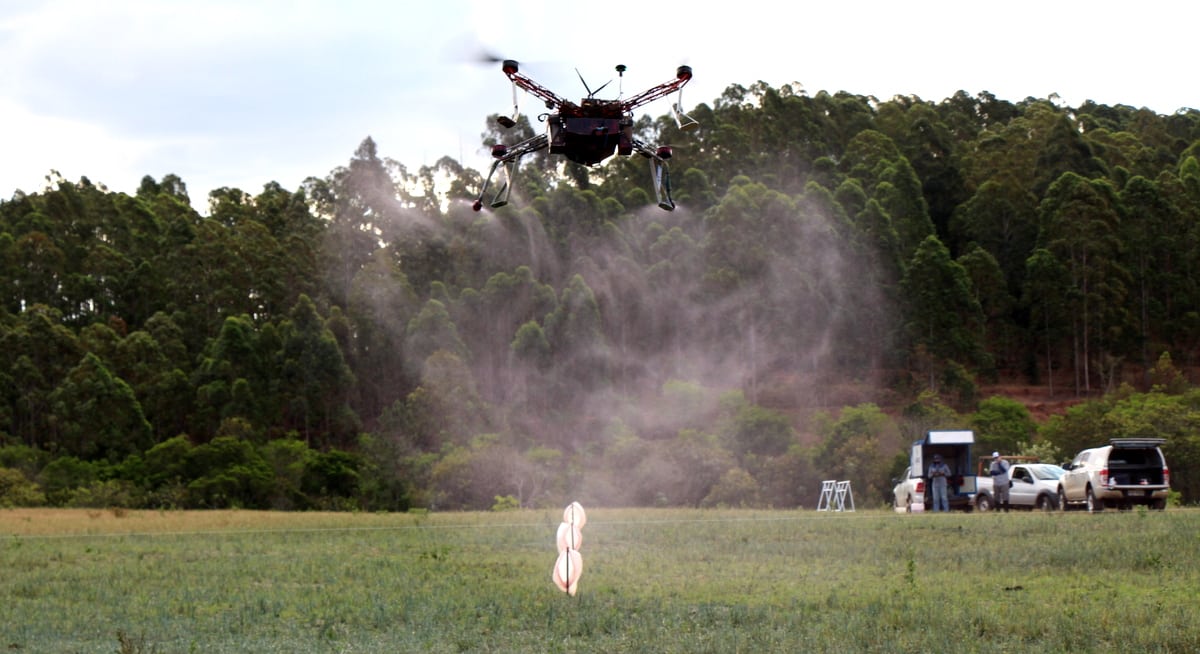
Example of the interference of the vortices generated by the rotors on the sprayed drops. (Photo: AgroEfectiva).
Thus, among the factors to obtain an application with quality and safety, there must be a previous study of the deposition range to determine the ideal uniformity and width as a function of characteristics such as droplet spectrum and flight height.
In addition, it is important to assess other parameters that will be discussed below, such as the risk of drift and weather conditions, including wind direction.
The drone spraying system
The spraying system used in drones is relatively simple, having similarities to that of an agricultural aircraft.
After evaluating the characteristics of the target, the meteorological conditions and the characteristics of the applied products, the choice of the droplet spectrum that will be used in the spraying, as well as the application rate and swath width, must be made.
It is always important to observe the direction of the wind, and to use all possible techniques to avoid problems with drift, which is the loss of the applied product.
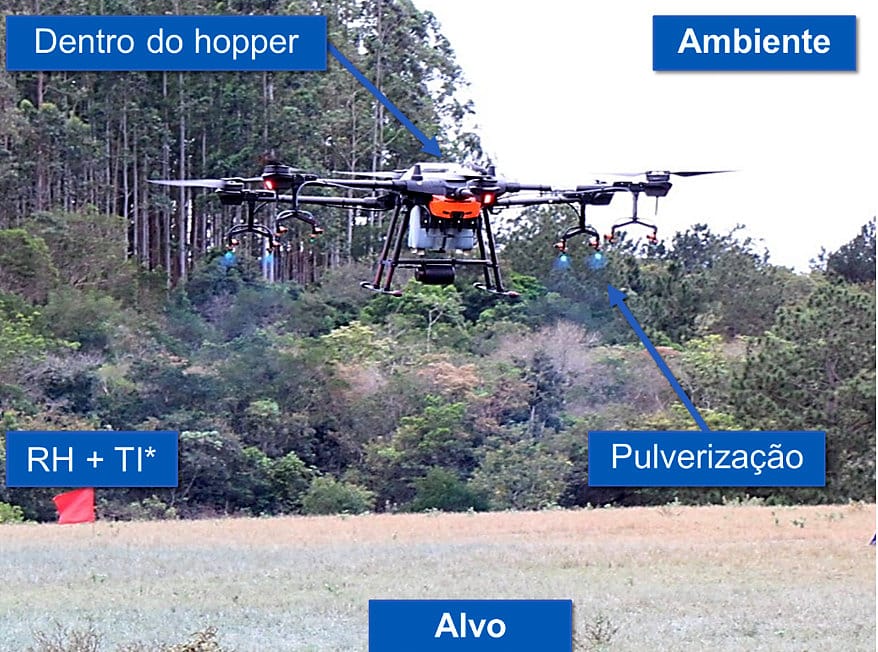
Aspects of application technology related to a drone application. *HR + IT: Human resource, means the person who operates and the others involved in the spraying process; IT: Information technology, which are aspects related to the technology embedded in the tool. (Photo: AgroEfectiva)
Research carried out by AgroEfetiva in the years 2020 and 2021 showed that the need for training or deepening in application technology by some operators and drone manufacturers has caused systematic errors in applications, especially in terms of application rate and deposition uniformity.
Often, the application rate programmed by area varies above what is considered acceptable (up to 5%), and in some cases it can be higher than 20%.
In addition, research has shown that there must be a good understanding of the technique so that there is uniformity in the application and mitigation of the risk of drift.
Final considerations
Finally, drones are a promising tool for spraying tasks in Brazilian crops.
At first, the tendency is for farmers to hire the spraying service and that this occurs more frequently on smaller properties, areas of difficult access or for localized applications.
Even so, there are challenges for quality in applications, mainly in relation to uniformity of applications and mitigation of the risk of drift.
- Fernando K. Carvalho e Rodolfo G Chechetto – Agronomists, Researchers at AgroEfetiva, Botucatu;SP;
- Michael Althman e Vicente Cornago – Doctoral students. Dep.de Rural Engineering, FCA/UNESP, Botucatu Campus;
- Ulisses R. Antuniassi – Full Professor, Dep. of Rural Engineering, FCA/UNESP, Botucatu Campus.
See also: 5 reasons to invest in drones for farm management

